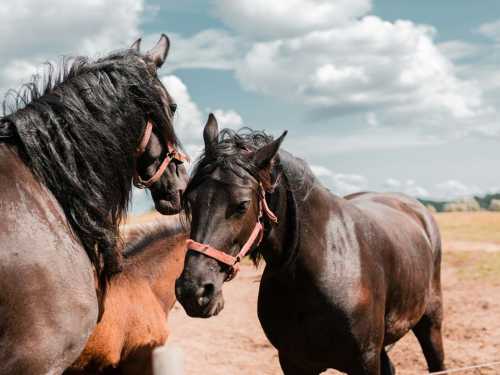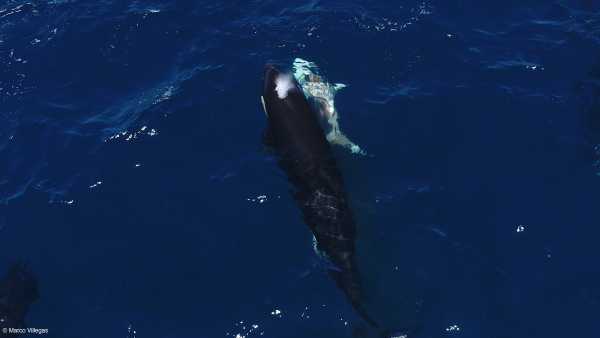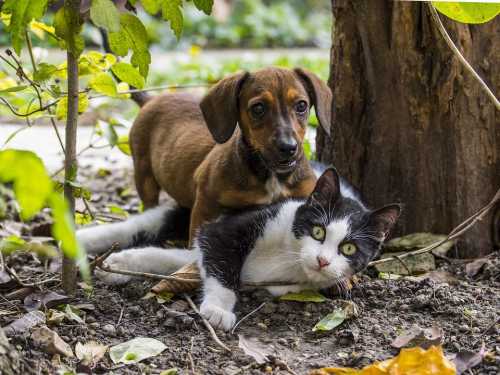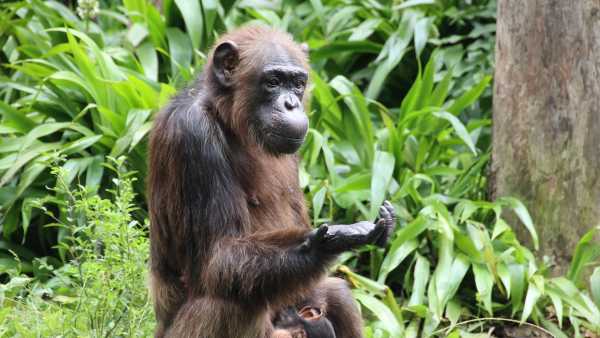
Which animals do you think have tougher relationships within the group: wolves or horses? Where do more fights occur? Who is ready to tear apart an opponent for a sideways glance? Who has no less passions than in Turkish TV series? You have already seen the picture with horses, so the answer is obvious. And believe me, after reading the article, predators will seem like pacifists to you!
It is worth clarifying at the outset that the concepts of “honor” or “tyranny” are anthropomorphic. Animals are driven by survival and procreation instincts, not by human moral standards. Although horse fights can be extremely brutal, they are usually a means of establishing and maintaining a hierarchy, which, paradoxically, reduces the overall amount of conflict in a stable group.
To understand the reason for such a cruel relationship, let's look at the structure of the herd and pack of wolves. For gray wolves, a pack is a large family. At the head are parents, subordinate to children. There is a clear hierarchy in it, based on the roles of parents in age, with an alpha pair at the head, but it is aimed at joint survival (hunting, raising offspring) and minimizing conflicts. Young wolves can leave the pack, but this process is rarely easy. It is a risky and exhausting journey associated with finding a new territory and a partner, and many of them do not survive.
In a herd, the structure and principles are completely different. Only one stallion can be the alpha. He owns the harem and the young. All the foals are his work. The strict laws of the steppe allow only the strongest of the strongest to reproduce. This is where the whole essence of cruelty lies. The males win the right to own the herd with sweat, blood and flesh.
The monopoly of one stallion on breeding in a herd is a driving force of fierce competition, because it is a direct path to the transmission of his genes. But the “alpha” stallion is not just a fighter. He must also be a vigilant defender, a strategist, able to keep his harem from other males and predators, as well as to direct it. This requires enormous energy expenditure and constant readiness for conflict.
Foals know their place from birth. The baby has not yet had time to open his eyes and stand on his legs, but he has already received the status that his mother possesses. She is his first teacher of etiquette. The mare teaches the child the rules of horse society and explains how to behave with elders.
When the foal grows up and gets stronger, it will begin to play with its teenage peers.
Although mares' games seem calm and peaceful, they have a purpose – they practice the skills of repulsion, defense, and establishing dominance without serious physical injuries, which they will need in adulthood.
And for foals, any game turns into a friendly brawl – they bite, kick and knock each other to the ground. This is how they hone their future fighting skills. For foals, this is a “training ground”, where they hone not only physical skills (speed, strength of blows and bites), but also social ones (reading the opponent, tactics, reaction to pain). It also helps them develop proprioception (a sense of the position of their body in space) and coordination, which is vital for complex movements in combat.
The age of 12-18 months is crucial for horses – the period of puberty. By this time, the young are finally merging into the general hierarchy of the herd. The status of the mother gave a good start, but now it will not help: everything will have to be achieved independently. This period is a kind of “teenage rebellion” in horses. Hormonal changes encourage young animals to actively test the boundaries of the hierarchy, to find their place. For colts, this is the time when the alpha stallion begins to consider them as potential rivals, and for fillies – when they have to compete with other females for the best positions in the herd. This is a time of significant social and physical changes.
Having grown up, mares remain in the herd. They compete with older comrades for a place in the sun. Usually this happens without serious injuries – the animals manage with threatening poses, plugged ears and angry snorts. But every now and then it does not fall out. Unlike stallions, females do not try to tear each other apart with their teeth – they more often fight back with their hind hooves.
Although conflicts between mares are often less bloody than fights between stallions, they can be just as dangerous. A rear hoof kick is a powerful weapon that can cause serious injury or even death. Hierarchy among mares affects access to vital resources such as the best pastures, shade in the heat, water, and safer places in the center of the herd when threatened. In a well-structured herd, conflicts are minimized because each mare knows her place, which ensures group stability.
The only one whose status is not encroached upon is the head mare. The oldest, most experienced, and wise. Everyone obeys her without question, she is obeyed, and she is respected. She is the one who chooses when the herd will go to water and when it will rest.
Her leadership is not based on brute strength (like a stallion), but on experience, knowledge and wisdom accumulated over the years. She is the “brain” of the herd, remembering the location of watering holes, the safest migration routes and places to hide from predators. The herd trusts her with their lives, and her decisions are accepted without question. The loss of such a mare can disorient the entire herd, leading to chaos and increased vulnerability.
This shows that the horse hierarchy has two dimensions: physical dominance (stallion) and social/empirical leadership (lead mare).
It is much more difficult for foals to grow up. Only one stallion can lead the herd together with the leading mare. The alpha will not tolerate other males who claim anything near him. He will restrain a young man who has encroached on his chastity with harsh bites and blows. If a growing horse can be content with the lowest status in the herd, he will be able to stay there for a while. Otherwise, he is kicked out.
The expulsion of young stallions from the herd is an evolutionary mechanism that prevents inbreeding and reduces competition for resources within the group. The alpha stallion perceives any attempt to breed from a younger male as a direct threat to his genetic inheritance, so his reaction is extremely aggressive.
The outcasts have two paths. The first is a sausage party. Such guys wander all their lives alone or in the company of other bachelors. The second is to find and conquer another herd. To join forces with the leader and drive him away. Full of strength, but not experience, the colts initially remain beaten. But each fight hardens them. If he has enough passion, intelligence and courage, in a couple of years his attempts will bear fruit.
Groups of bachelor stallions are a kind of “survival school”. Here young males can hone their fighting skills, test each other's strength, learn tactics and strategy without risking their lives in the struggle for a harem. It is also a time for physical maturation. Initial defeats are valuable lessons that form character and resourcefulness. It is not enough to be simply strong, you also need intelligence, endurance and the ability to “read” your opponent.
If all goes well, the newly minted alpha will have a heavy burden of protection on his shoulders. He will need to protect his herd from other stallions, predators, and any potential threats.
His dominance is not just a privilege, but a huge responsibility. He is the “shield” of the herd, which is constantly on alert. This requires not only physical strength, but also tireless vigilance, the ability to quickly assess threats and make decisions. Protection from other stallions is a fight for his genetic heritage, and protection from predators is a fight for the survival of the entire herd. This constant tension makes his life short but full of meaning.





